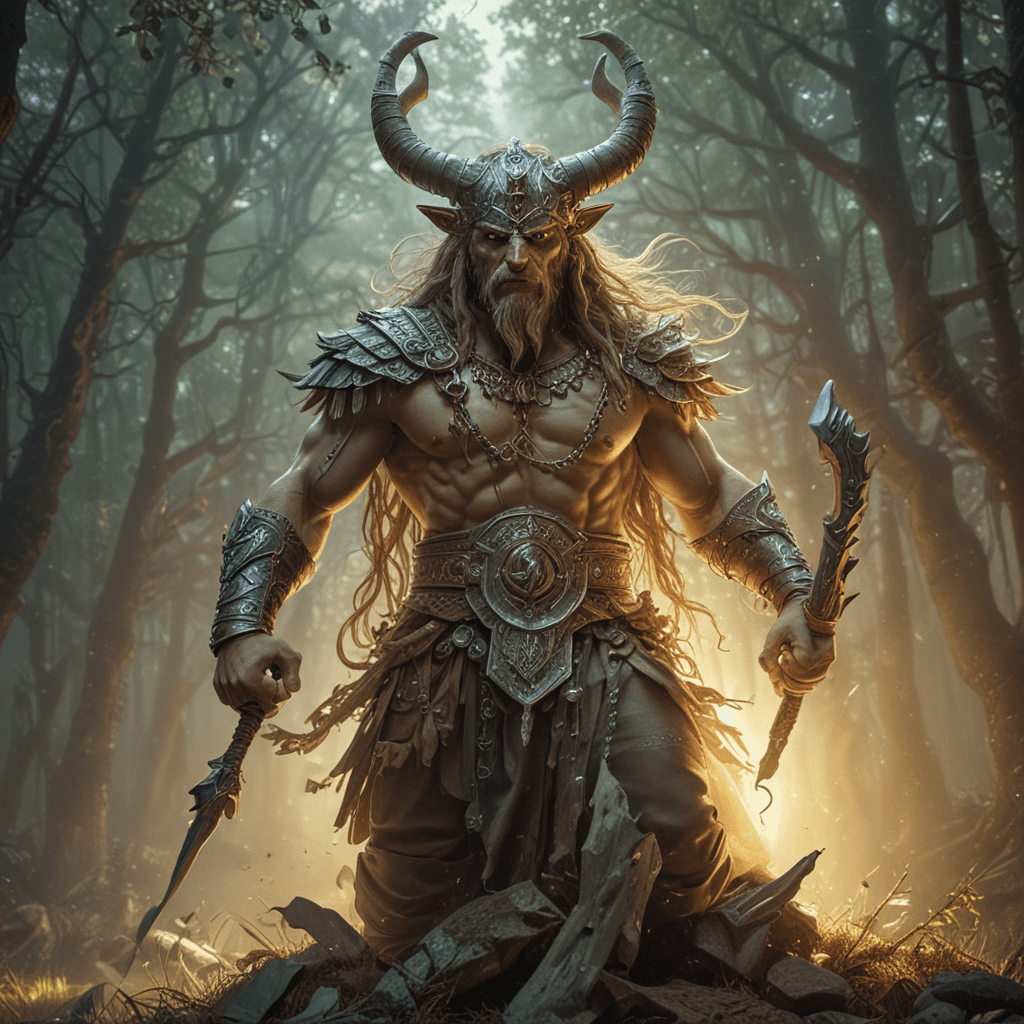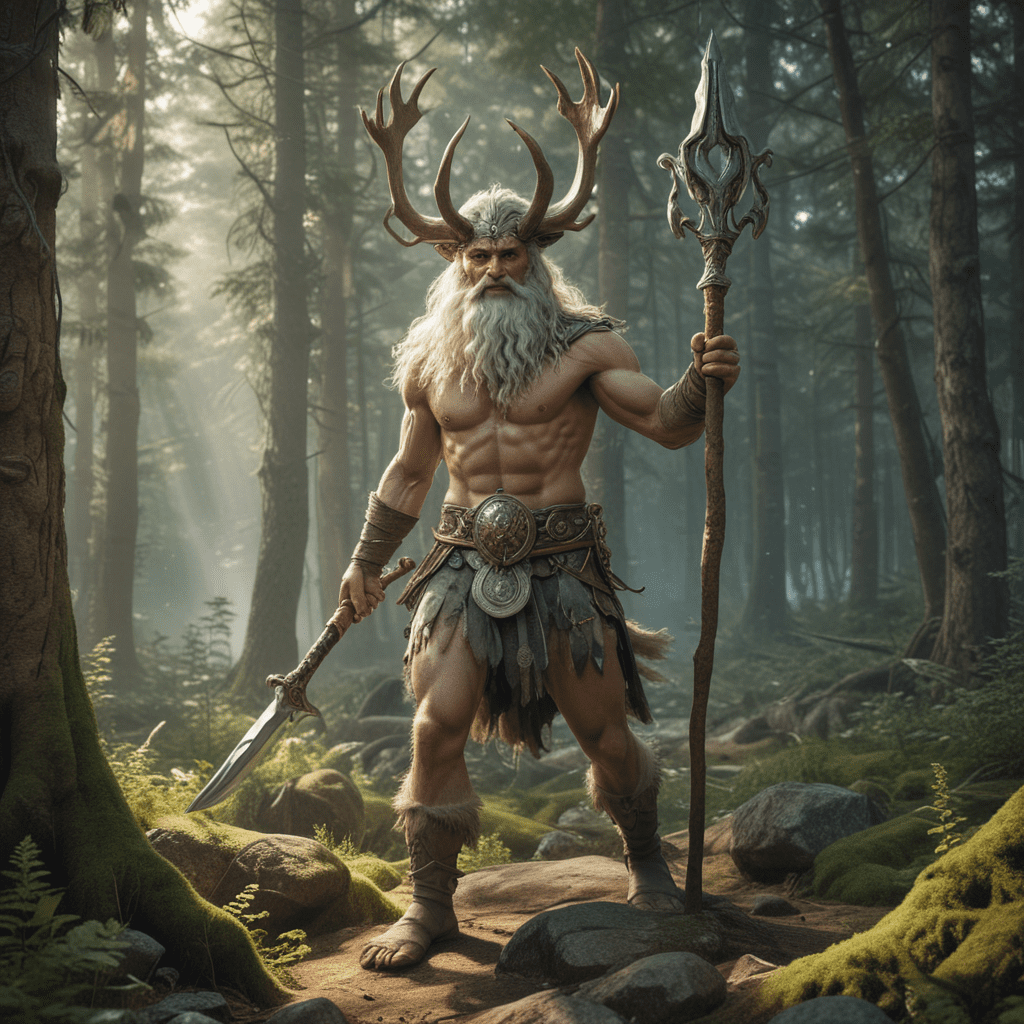Slavic Mythology: The Power of Mythical Objects
Introduction: The Significance of Mythical Objects in Slavic Culture
In the realm of Slavic mythology, mythical objects play a pivotal role, imbued with extraordinary powers that shape the destiny of heroes, influence the course of events, and embody the very essence of the Slavic worldview. These objects are not mere accessories or ornaments; they are symbols of profound significance, representing the interconnectedness of the natural and supernatural worlds, and the boundless potential of human aspiration.
The World Tree: Yggdrasill and Its Cosmic Significance
At the heart of Slavic cosmology lies the World Tree, known as Yggdrasill. This colossal tree connects the heavens, the earth, and the underworld, serving as a conduit between the realms and a source of sustenance for all living beings. Yggdrasill's roots reach deep into the abyss, anchoring it in the primordial depths, while its branches stretch towards the sky, supporting the celestial bodies. It is a living symbol of the universe's order and balance, representing the eternal cycle of life, death, and rebirth.
The Golden Apple: A Symbol of Fertility and Power
In Slavic folklore, the Golden Apple is a sacred fruit that embodies the power of fertility, abundance, and immortality. It is said to grow in the Garden of Eden and is guarded by a fierce dragon. Heroes who embark on quests to acquire the Golden Apple are often rewarded with extraordinary strength, wealth, and the fulfillment of their deepest desires. The apple represents the generative forces of nature, the promise of new life, and the enduring hope for a better future.
The Rusalka’s Comb: A Tool of Transformation and Magical Healing
The Rusalka's Comb is a mythical object associated with the water spirits known as Rusalkas. It is believed that the Rusalkas use their combs to maintain their beautiful hair and enchant unsuspecting mortals. However, the Rusalka's Comb also possesses healing powers. When used by a skilled healer, it can restore health, mend broken bones, and even reverse the effects of aging. The comb represents the transformative power of water, its ability to cleanse, heal, and rejuvenate.
VI. The Firebird: A Guardian of Wisdom and Renewal
In Slavic mythology, the Firebird is a mythical creature of extraordinary beauty and power. Its feathers shimmer with iridescent colors, and its song can heal the sick and bring good fortune. The Firebird is believed to possess great wisdom and knowledge, and its appearance is often seen as a sign of impending change or renewal. Heroes who encounter the Firebird are often tasked with difficult quests, but those who succeed are rewarded with its guidance and protection.
VII. The Dragon's Egg: A Source of Extraordinary Power and Creation
In Slavic folklore, the Dragon's Egg is a mythical object of immense power. It is said to be created from the breath of a dragon and contains within it the potential for both great good and great evil. Heroes who acquire the Dragon's Egg must be cautious, as its power can be both destructive and transformative. Legends tell of how the Dragon's Egg can be used to create new life, heal the sick, or even conquer entire kingdoms. However, it can also be used for dark purposes, such as summoning demons or casting destructive spells.
VIII. The Baba Yaga's Mortar and Pestle: Tools of Travel and Transformation
In Slavic mythology, Baba Yaga is a powerful witch who lives in a hut on chicken legs. She possesses a magical mortar and pestle that she uses to travel through the air and grind the bones of her victims. The mortar and pestle are also symbols of transformation, as Baba Yaga uses them to create new creatures and change the fate of those who cross her path. Heroes who encounter Baba Yaga must be wary of her powers, as she is known to be both helpful and harmful.
IX. The Kolovrat: A Solar Symbol of Protection and Good Fortune
The Kolovrat is a Slavic solar symbol that represents the sun and its life-giving power. It is often depicted as a wheel with eight spokes, each representing a different aspect of the sun's energy. The Kolovrat is believed to bring protection, good fortune, and abundance to those who wear it or display it in their homes. It is also a popular symbol of Slavic identity and pride.
X. The Alatyr Stone: A Center of the World and a Source of Spiritual Enlightenment
In Slavic mythology, the Alatyr Stone is a sacred stone that is believed to be the center of the world. It is said to be a fragment of the World Tree, Yggdrasill, and is believed to possess immense spiritual power. The Alatyr Stone is a symbol of stability, order, and enlightenment. It is said that those who meditate on the Alatyr Stone can gain deep insights into the nature of the universe and their own place within it.
FAQs
What are the most powerful mythical objects in Slavic mythology?
The most powerful mythical objects in Slavic mythology include the World Tree, Yggdrasill; the Golden Apple; the Rusalka's Comb; the Firebird; the Dragon's Egg; Baba Yaga's Mortar and Pestle; the Kolovrat; and the Alatyr Stone.
What do these mythical objects represent?
These mythical objects represent a wide range of concepts, including the interconnectedness of the natural and supernatural worlds, the power of fertility, the transformative power of water, the wisdom of the ancients, the potential for both good and evil, the importance of protection and good fortune, and the search for spiritual enlightenment.
How were these mythical objects used in Slavic culture?
These mythical objects were used in a variety of ways in Slavic culture, including as symbols of power, protection, and fertility; as tools for healing and transformation; and as objects of reverence and worship.



